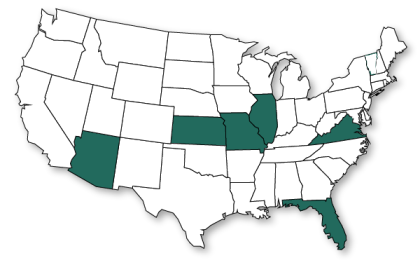
Any number of authorities, including your smart uncle who always has a way to get out of a jam, will tell you to have an emergency kit in your car. After a recent accident, I decided to make sure I had one that included some of the things I would have wanted to have had the police, fire and ambulance not arrived so quickly.
Most of the stuff I have I picked up here and there, much of it from a discount store. The nice duffle bag cost me three bucks at a thrift store. Several more of the items I had laying around the house or are re-purposed from stuff I might otherwise throw away or recycled.
Here is the list of items in my kit.
Jumper Cables – This is the most likely tool you will need on a cold day. Of all the things in your kit, this is what you should not skimp out on. Heavier cables carry more current, which in turn allows your car to start up right away from a jump. Mine will work on both top-post mounted batteries and side-post.
Gloves and Shop Cloths – A buck or two for a pair of cotton gloves and a set of shop cloths. Great for changing a tire and cleaning up afterward.
Trash Bags – I keep a couple on board in case you need to work on a dirty surface or pick up a bunch of broken pieces in a minor fender-bender. Can also help keep you dry or warm in a pinch.
Half Gallon Bottle of Water – Filled about ¾ of the way, this will likely freeze in the winter, but it will still come in very handy. Stranded in a ditch, even the frozen bottle will yield drinking water if you keep the bottle near the floor heater vent.
Duct Tape & Zip Ties – There are few problems that cannot be helped with duct tape and zip ties.
Bandages and Tape – Big gauze bandages and a few small band-aids will handle all but the most serious wounds until help arrives.
Blankets – I picked up a pair of polar fleece blankets at a discount store. You can also find such things at thrift stores. In an accident, a blanket can be the difference between life and death as they can prevent shock by keeping an injured person warm.
Emergency Blanket – These mylar and foil blankets coupled with a blanket will keep you toasty in all but the worst weather.
Food – Dried fruit, nut mixes, and breakfast bars will keep you in good spirits if you are stranded and waiting for help. Be mindful of their shelf life and replace them from time to time. You can also get “Meals Ready to Eat” at sporting good stores or from online retailers that are hearty packages of food with a very long shelf life, but bear in mind sitting in your hot car will have an effect on how they will taste. Replace accordingly.
Multi-Tool – For small repairs, this little gem is cheap and easy to use and can be a very handy in a tight spot. Knife, pliers, can opener, screwdriver – very, very handy.
Screwdriver – I just like having a real screwdriver in the field. Use one of those combo drivers that allow you to switch between flat and Phillips.
Ratchet-Tie & Rope – In a minor collision, this may allow you to drive away if you hood won’t stay down or your door will not stay shut. Same thing with a small hank of ¼” nylon cord.
Flashlight & Lightsticks – Another discount store find, the big lightstick will glow for several hours allowing you to conserve your cell phone battery. I keep an extra flashlight in the kit with the batteries removed. Batteries left in flashlights and other devices can end up corroding your flashlight rendering both useless.
Tissues – Stuck in the snow or otherwise stranded, you will be glad of these tissues should nature call.
Ten Bucks in Change – I walked out of the house without my wallet once and nearly ran out of gas on the way back. Stranded, you may be able to get a snack or a drink from a vending machine or maybe even use a pay phone.
Optional Items – These are a few things you may want to keep in the trunk as well.
Tire Repair Kit and Compressor, or a Can of Flat Fixer – This can help you if for some reason you cannot put the spare on. I actually have a tire patching kit in my car and a little compressor to air up the tire.
Failing that, you can get a can of aerosol tire sealant that will squirt a sealer into your tire as well as some air. Get over to a service station and air it up to full inflation as soon as you can. Your tire guy won’t like it when it comes time to rotate the tires, as it puts a sticky goo inside the tire. If you go the can of tire sealant, choose the can with a hose on the end rather than the kind with just a spout on top of the can. The hose will make it much easier to manage getting your tire sealed and re-inflated.
Storage – I happen to have a vacuum sealer, so I sealed up everything that needs to stay dry and clean, like the food and first aid kit. I even fit the bottle of water into a bag and sealed it against leakage. The tools, tape, jumper cables and other stuff I just stuffed into a plastic zipper bag since these are items I will most likely need in a minor roadside problem, like a flat tire or dead battery. Keeping your things in large zipper freezer bags will probably suffice.
Overall, this bag cost me about 40 bucks, much of it the cost of the jumper cables.


